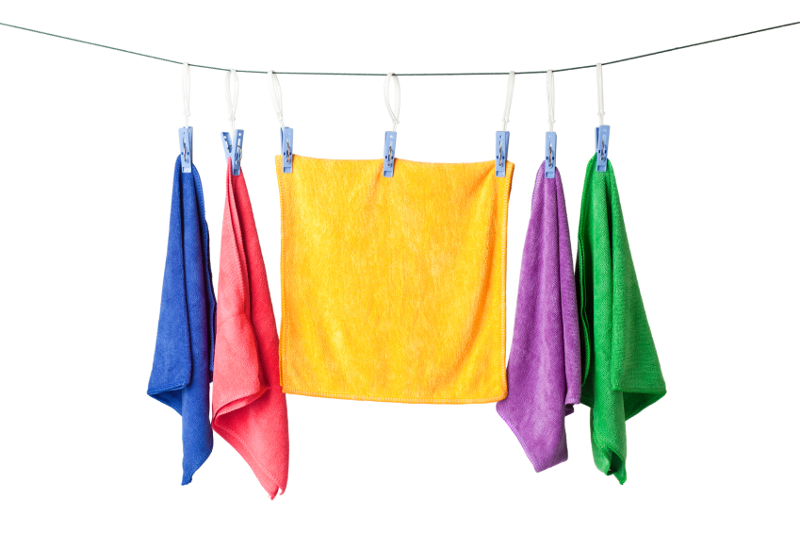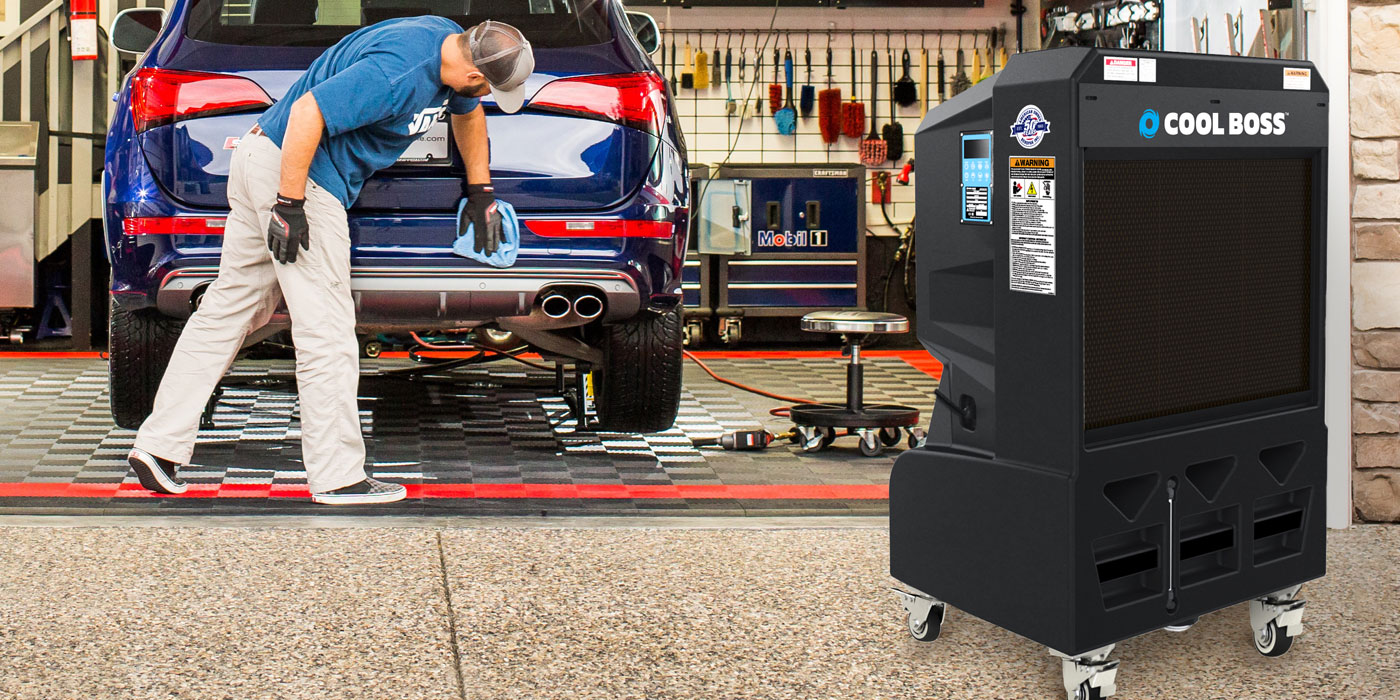The two main types of towels dominating the car care industry are terry (cotton) and microfiber. Yet, with a seemingly endless array of sizes, shapes, thickness, fabrics, colors and styles, finding the right fit will vary, often requiring a little bit of trial and error. This article will discuss the best practices of how to properly wash and care for microfiber towels.
“At the end of the day it is all about personal preference,” says Byron Gartland, president of BeautifulRags. “I tell people use what works. There is really no wrong answer.”
Although terry towels have been a popular choice over the years for their durability and versatility, microfiber is quickly becoming the top pick for many carwashes and detailing centers because of its impressive absorbency, longevity and ability to optimize performance in critical areas of the wash cycle.
Yet even though microfiber towels in many cases help elevate the efficiency of a wash/detail service, they can quickly lose their effectiveness and rendered essentially useless to the car care business if they are not properly laundered and maintained.
The microfiber washing process
Although a lot of products are available with claims to rejuvenate microfiber towels, Gartland recommends carwashes do not take any risks, adding that the best way to care for microfiber towels is to follow the right laundering procedures.
“When washed properly, microfiber can last hundreds of washings,” asserts Valerie Sweeney, vice president of ERC Wiping Products Inc. “The manner in which you wash and dry your microfiber towels can deeply impact the effectiveness of the towel.”
For starters, microfiber towels should be washed in cold or warm water, advises Sweeney, noting that the temperature should never exceed around 105 degrees Fahrenheit.
When it comes to soap, Gartland states no detergent would be best, although it’s impractical. Sweeney, on the other hand, says microfiber should be washed with liquid detergent.
“Even if the cloth was used with window cleaner, a separate washing detergent needs to be added to the wash,” she continues. “The soap is what holds the dirt and removes it from the towel. Without soap, the dirt will go back onto the cloth.”
Likewise, both Sweeney and Gartland stress to never use fabric softener. “Fabric softener will actually clog the small wedge-shaped filaments of the microfiber and render it useless,” explains Sweeney, adding that bleach should also never be used because it “will take the color out of the cloth.”
Perhaps most importantly, microfiber towels must always be washed separately from other fabrics and materials, especially cotton towels. The lint from other towels will stick to the microfiber, shares Sweeney, making it especially difficult to get off. “To keep the wedges intact, it is best to wash microfibers in a full load to ensure less wear and tear,” she states.
Drying considerations
The drying process is equally important to retaining microfiber quality. Ideally, these towels should be air dried, says Gartland. However, this might not be practical for some facilities, especially high-volume carwashes.
For carwashes utilizing dryers, the machine must be completely cooled down before drying a load of microfiber towels. Most importantly, asserts Sweeney, make sure the dryer is on the coolest setting, either permanent press or air fluff.
“Because microfiber is made of polyester and nylon, high heat will cause melting, which will close the wedge-shaped fibers,” she explains. In fact if it seems like microfiber towels are not as absorbent as before, says Sweeney, they might have melted. The most common causes for melted microfiber are drying on high heat and placing in a dryer that wasn’t fully cooled down.
Unfortunately, it will be hard to tell if towels are melted just by looking at them. “A microfiber towel in good condition and one that is melted look pretty much the same,” states Sweeney. “It might not appear damaged, but you will notice streaks when you clean the windows.”
A quick test to see if a microfiber towel has melted is to pour a little water on a table and wipe with the towel, recommends Sweeney. A melted towel will not absorb; it will just push the water around.
“Another way to tell fibers have been damaged is to run your hand over the cloth,” says Sweeney. “If it feels like it’s pulling your skin (like you have dry skin), then it’s good. If it doesn’t, then you might need to replace [the towel].”
To ensure prime results, explains Gartland, take microfiber towels out of the machine just a little bit before they are completely dry. “They are the most absorbent when they are just a hair damp,” he explains.
Additional care guidelines
Following the right washing and drying directions are critical to protect microfiber. However, laundering alone will not safeguard your towels. Additional care and maintenance procedures should be followed to maintain a high performance level.
Implementing a color-coding system, for instance, can not only help preserve quality but it can also reduce chances of cross contamination and potential damage to vehicles. “I tell people, if they are [performing] a tire shine [service] or something like that and are using one of their microfiber towels, to use a safety color; use a bright orange, a bright green or something [similar],” says Gartland, adding that a vibrant color can be utilized for cleaning the wheels while a darker color, usually black or dark, navy blue, can be used for other services requiring a different chemical.
Employees must be trained to use the right towel for the right job, asserts Gartland. Do not grab a tire shine towel to wipe the body of a vehicle; you do not want that chemical to touch the car’s paint, resulting in potential damage.
Moreover, consider using larger towels for the body and smaller ones for the windows or trim, continues Gartland.
Sweeney agrees, noting that smaller towels, such as 14 by 14 inches or 16 by 16 inches, typically work best on windows; and larger microfiber cloths, 16 by 24 inches or 16 by 27 inches, are better for the body.
Furthermore, says Sweeney, if a microfiber towel falls on the ground it should be put right into the wash. “Dirt can easily cling to microfiber; so if an employee drops the towel on the ground and then goes to use it on the customer’s vehicle, the dirt or sand on the towel can damage the car,” she continues.
Remember, notes Gartland, microfiber towels tend to last longer than other towels — approximately 500 washes — when properly cared for. However, he adds, keep in mind a manufacturer’s estimated washings might not be feasible.
“If someone tells you 1,000 washes, it is probably around 500 or so since you won’t be [following] a perfect process like the manufacturer intended,” explains Gartland, adding that it requires a balance. “If you pay the extra money for a premium microfiber towel, you will get better results and more longevity out of your towels.”
Yet, regardless of the type of microfiber towel selected, following the laundering and care procedures discussed in this article will help maximize quality and, better yet, help reduce costs while boosting your bottom line.
Are you interested in learning more about caring for your microfiber towels? Be sure to check out the below video in our Carwash Connection video series on towel types and care.














